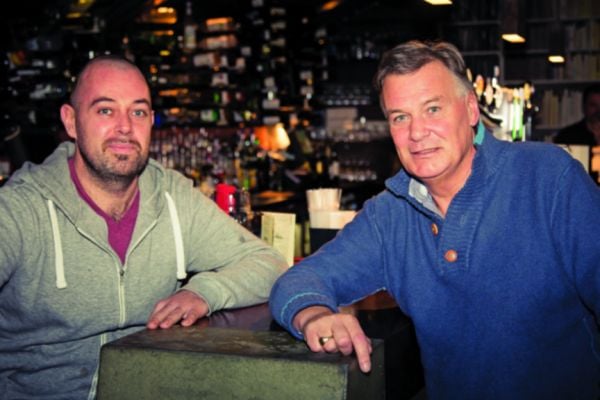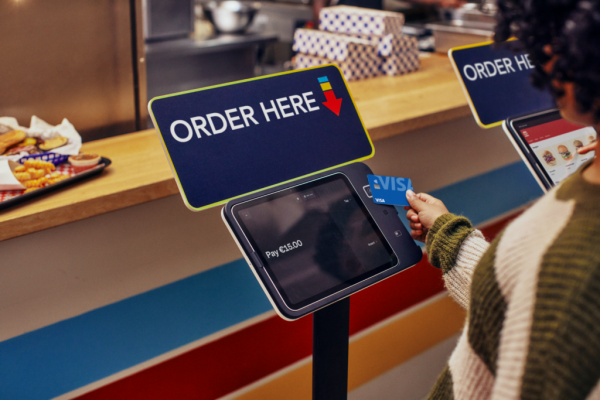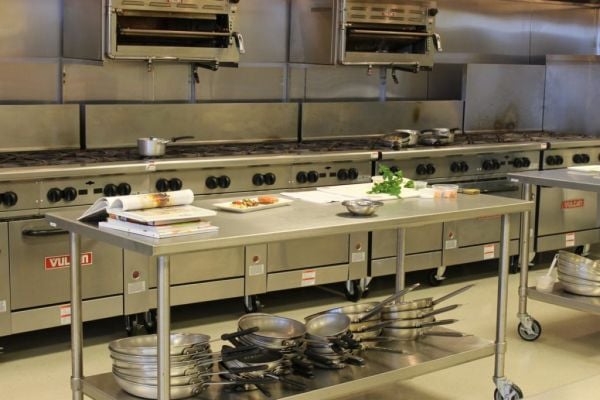Derry Clarke talks to Lee Doyle, head chef at The Exchequer, about working under Johnny Cooke and Aiden Byrne, running a restaurant in Dublin City, and how to cook a pig’s head five ways.
DC: So where did you start?
LD: I did a Cert course, over 20 years ago now.
DC: Explain what a Cert course is about. I always thought it was a great thing, I think it’s gone now?
LD: Yes it’s gone, sadly. It was in the college on Amiens street. It was just a basic skills course that lasted 22 weeks, and concentrated mostly on doing soups and sauces, basic stuff. You got a certificate at the end of it. But if you were any good, you could get a job out of it from one of the chefs that ran it. I was lucky that I got a student exchange, I was sent to Athens and I worked in a five-star hotel called the Ledra Mariott so that was the start of it. When I came back here, I started in Jurys under Peter Brady.
DC: So I assume you’ve worked in a lot of places before The Exchequer?
LD: After Jurys I had a few jobs before I started in another place, the Bistro in Stephen’s Hall, which was later Morrell’s. I did a couple of years in The Gresham; Cooper’s on Leeson Street; One Pico when it first opened, then I went back to Cooper’s. I also worked in The Commons with Aiden Byrne.
DC: Aiden Byrne is a good chef. He has a famous dish doesn’t he?
LD: Yes, Pig’s Head Five Ways. It was pressed cheek, confit gel, and others. I remember asking why he was putting a pig’s head on the menu, and he said, “It’s more for the shock factor than anything else, it’s just to show what I can do with a pig’s head.” He was a great chef though, I learned a lot from him. After that I did a stint in Australia, I got my first head chef’s job over there in a place called Republic in Sydney. When I came home, I started working with Johnny Cooke, in Cooke’s. I worked with him for three years. I started as a sous chef, then the head chef left so I got that.
DC: I had one of the best meals I’ve ever had at Cooke’s. It was some turbot with lemon capers and croutons, and that was it. Great dish!
LD: Well, that’s the thing about Johnny, he uses the best of everything. As long as it’s done well, you know? I remember being in there one Christmas Eve and we were absolutely slammed. Bono and Gavin Friday were in. After we all had a few drinks, Bono started singing White Christmas and Gavin Friday joined in. Next thing, the whole restaurant was sing- ing it. Everyone across the road in Grogan’s was standing there with their pints looking in the window! I really enjoyed working with Johnny, I learned a lot from him.
DC: You have good experience. You kind of experienced everything, in a way. I always say that’s a good thing for any chef – don’t be afraid to try different things.
LD: They need to see everything. I’ve worked in fine din- ing and Michelin, and I’ve worked in great hotels, but I’ve worked in dives as well. I think chefs need to see it all so they can decide for themselves, and take their own path.
DC: So The Exchequer, it’s a gastro pub?
LD: It is a gastro pub in a way, but I’d call it casual dining. In the front you can have bar bites, fish of the day, or a steak. Or you can sit in the dining room with a party of ten and have the whole lot.
DC: You are in a hot area here in town, especially now.
LD: Absolutely, there are so many restaurants in town now. I think there’s something like 2000 more seats than there were, just in this area alone. That’s a lot of competition. But on weekends it’s swinging, even if you don’t have many booked, you get people walking in.
DC: You mentioned before you’re doing a new menu, do you change the menu much?
LD: Instead of changing the whole menu, I try to change three or four items every month or two.
DC: And why is that?
LD: To get things on the menu that are coming into sea- son. Some foods only have six weeks. Some things would have a couple of months. I don’t think you can change the whole menu four times a year. It’s easier on the kitchen and servers to change a few things at a time. The likes of purple sprouting broccoli is only in season maybe six weeks, it’s the same with rhubarb, there are loads of things like that, and I like to have them on the menu.
DC: When you change the menu, do you find, as so many chefs do, that the problem is the ‘bankers’ i.e. the dishes that you don’t necessarily want to keep on the menu but the customer does? Those dishes that you just can’t get rid of!
LD: Yes, it drives you mad. I had a dish on that was my take on bacon and cabbage. Now, it looked great, but I wasn’t allowed take it off for two years! After a while I just had to take it off though because it drove me mad, looking at the same thing all the time.
DC: Do you find the places that have the same stuff all the time, the chefs get bored?
LD: They do; I get bored! Personally, I find it just gets monotonous. You like to be able to change things and play with new things.
DC: Food providence must be a big thing to you, ori- gins and suppliers, these are obviously important to you?
LD: I try to use mainly Irish produce, in season. It’s not always possible but it’s good to keep it Irish where you can.
DC: Any plans for the future?
LD: Just keep this place going as it is. Plus, we’ve got the wine bar going in Ranelagh now. We were originally doing small plates but we’re doing more hot food, starters and main courses now; that’s what the customers want.
DC: I see now that you’re doing a new menu, with new ideas. I think every chef should be doing that in the new year.
LD: I think it’s a case of during the month of December when you’re looking at the same food all day, every day, come the new year, you just need a change!









